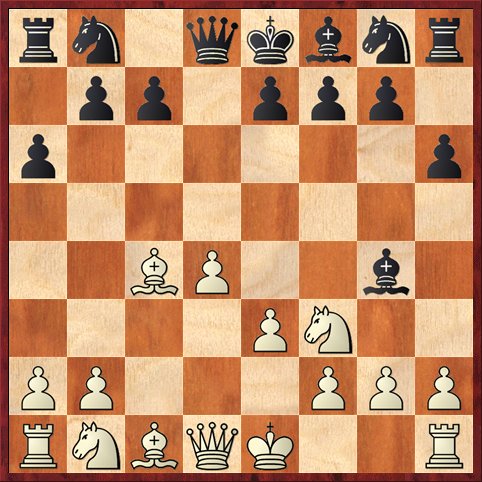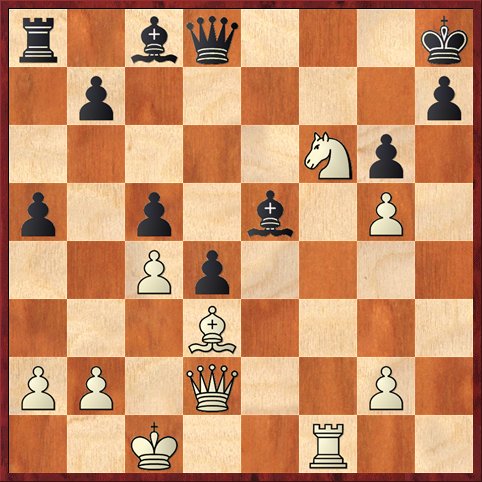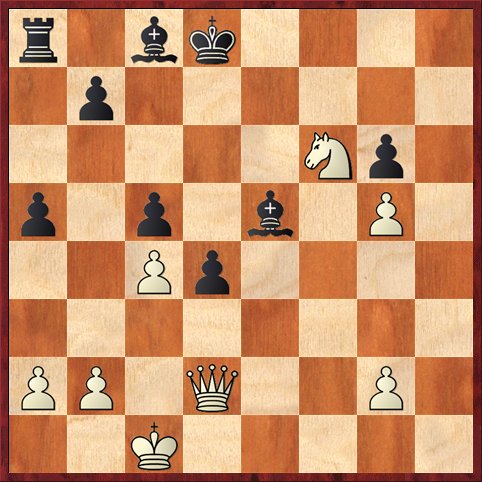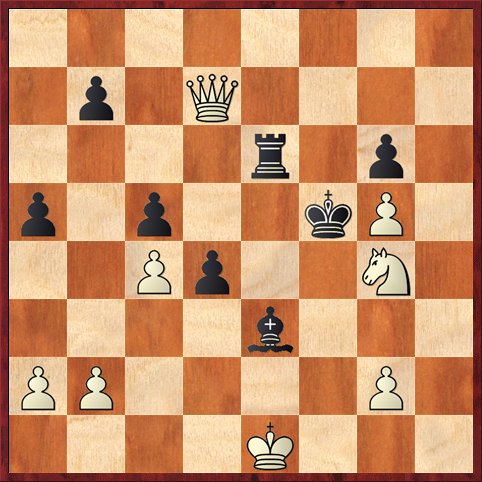Well, it’s December 31, a day that gets no respect because everybody is looking toward the new year. But it’s a perfect day for an “odds and ends” blog post, and that’s what I’m doing today. Everything today is either an odd or an end.
1) Congratulations to Bryon Doyle and Uyanga Byambaa on a supercalifragilisticexpialidocious week of chess and poker! They went to Las Vegas for the North American Open chess tournament (which both played in) as well as a poker tournament (which Uyanga played in). The ODDS were against them, but they both finished in the money. Although it was Uyanga’s first poker tournament, she got to the final table against professionals and finished eighth. As for Bryon, all he did was tie for first in the under-2100 section of the chess tournament and win $2000. Uyanga won a little bit less than that. These guys are such overachievers! I can’t stand it!
2) The END of the year for the Aptos Library Chess Club was yesterday. We had nine kids, and this time I’m pleased to say that every single one of them contributed to the lesson. We looked at position number 622 from Tactics Time:
 FEN: rn1qkbnr/1pp1ppp1/p6p/8/2BP2b1/4PN2/PP3PPP/RNBQK2R w KQkq – 0 6
FEN: rn1qkbnr/1pp1ppp1/p6p/8/2BP2b1/4PN2/PP3PPP/RNBQK2R w KQkq – 0 6
Position after 5. … Bg4. White to move.
The interesting thing about this position is that the solution published in the book is not the best one! Brennan and Carson’s solution is a well-known “sham sacrifice” of the bishop: 6. Bxf7+! Kxf7 7. Ne5+, winning a pawn and exposing Black’s king to further abuse, no doubt. I’m pleased to say that my kids figured this out on their own.
But wait! White can do even better! Do you see how? The answer is to play 6. Ne5! immediately, sacrificing the queen. Of course if 6. … Bxd1?? 7. Bxf7 is mate. Defending the f-pawn with the bishop does not help: If 6. … Be6 7. Bxe6 fe 8. Qh5 leads to mate. Or if 6. … Bh5 7. Qxh5 just wins the bishop. Probably Black’s best is 6. … e6, which also just loses the bishop to 7. Qxg4.
I have to say that the second half of the lesson didn’t work out so well. Nobody really came up with 6. Ne5 on their own, and even after 6. … Bxd1 they wanted to take on f7 with the knight. Again it took some strong hints for me to get them to look at 7. Bxf7+ and realize it was mate. I’d say the class was split 50-50 between people who thought the king could take the bishop and people who thought the king could escape to d7. Isn’t it ODD that humans can’t see checkmates that are right in front of them?
3) Everybody always yawns whenever I post anything about my training games with Shredder. Not human implies not interesting, I guess. But every now and then, when I play it at a “weakened” level, it lets me have a little bit of fun. Here’s a game I played a couple days ago, with its rating set at 2201.
 FEN: r1bq3k/1p5p/5Np1/p1p1b1P1/2Pp4/3B4/PP1Q2P1/2K2R2 w – – 0 23
FEN: r1bq3k/1p5p/5Np1/p1p1b1P1/2Pp4/3B4/PP1Q2P1/2K2R2 w – – 0 23
Position after 22. … a5. White to move.
This game was played, as usual, at a game/10 time control. I managed to sacrifice a pawn without realizing it, just by miscounting, but Shredder 2201 has given me compensation by playing with a reckless disregard for the safety of its king. (I’m sure full-strength Shredder would have done better.) How does White win?
The answer, which I’m sure you saw, was 23. Bxg6! hg 24. Rh1+ Kg7 25. Rh7+ Kf8 26. Rh8+ Ke7 27. Rxd8 Kxd8. With a queen for rook and bishop and with Black’s king so exposed, White is surely winning. It’s a matter of technique. But that’s what I want you to think about. What is the technique?
 FEN: r1bk4/1p6/5Np1/p1p1b1P1/2Pp4/8/PP1Q2P1/2K5 w – – 0 28
FEN: r1bk4/1p6/5Np1/p1p1b1P1/2Pp4/8/PP1Q2P1/2K5 w – – 0 28
Position after 27. … Kxd8. White to move.
Here I thought about the position human-style and played a move that I think was perfectly good. I wanted to play Qf2, then move my knight away from f6 (probably to d5) and penetrate to f8/f7/f6 with my queen. But I saw 28. Qf2 Bf5, which temporarily stops White’s plan, and rightly or wrongly I decided to play 28. g4, first controlling f5, and then after 28. … Ra6 I played 29. Qf2. I think White should still be completely winning here, although later I went wrong and lost on time.
But what I want to show you, just for laughs, is the way that Shredder thinks I should have played. As promised, it’s ODD but it’s wonderful. It involves a sequence of about 14 straight forced moves that culminate in White winning all of Black’s pieces and being a queen ahead. Are you ready?
Shredder’s solution: 28. Qe1! (Idea: get the queen to e8 and win. Black’s first couple moves are not forced but they are clearly the most aggressive try.) 28. … Bf4+ 29. Kd1 Be3 (Slamming the e-file shut.) 30. Qg3! (The forced sequence begins. The threat is Qd6+ followed by mate or winning a rook.) Ra6 31. Nd5! (Threatens Qc7+ followed by mate or winning a piece.) Rc6 32. Qe5! (Threatens mate on e7. But it seems to give Black a useful zwischenzug.) Bg4+ 33. Ke1 Re6 34. Qc7+ Ke8 35. Nf6+ Kf8 (At this point humans would stop analyzing and say that White will win the bishop on g4, after first safeguarding the queen. But the computer just keeps going and wins everything.) 36. Qd8+ Kf7 37. Qg8+ Ke7 38. Qg7+ Kd6 39. Qd7+ Ke5 40. Nxg4+ Kf5 and now the move that is the whole reason I dragged you through this long variation…
 FEN: 8/1p1Q4/4r1p1/p1p2kP1/2Pp2N1/4b3/PP4P1/4K3 w – – 0 41
FEN: 8/1p1Q4/4r1p1/p1p2kP1/2Pp2N1/4b3/PP4P1/4K3 w – – 0 41
Position after 40. … Kf5. White to move.
41. Nxe3+
Here’s the thing about computers. They’re ruthless. They don’t just try to win, they kick you in the nuts as they’re doing so. (Apologies to anybody whom I might offend with that language.) 41. Qd5+ is perfectly all right, winning the rook. But no, the computer has to twist the knife. The rook, being pinned, can’t take on e3, and if 41. … de then 42. g4+ Ke5 43. Qd5+ finally separates Black’s king from the rook and White ends a whole queen ahead.
So what strikes me as interesting about this is the comparison with the position I showed the kids. There I was wondering why they couldn’t look just a little bit deeper and use mating threats to win a bishop instead of just a pawn. Undoubtedly Shredder was thinking the same thing about me. Instead of settling for a move like 28. g4, which probably wins in the long run but gives Black lots of options, why not throw a blizzard of mate threats at him, in order to completely ransack his position fourteen moves later?
Well, because humans don’t play that way. We learn through experience to hedge our bets and play safe moves like 28. g4 instead of just storming the opponent’s position. But maybe we should learn to be a little bit more ruthless when the position calls for it.
And that, my friends, is the END for this year.



{ 3 comments… read them below or add one }
Along the theme of your blog, why win the queen at all? Isn’t 23. Bg6 hg6 24. Qe1 even stronger than Rh1+? It threatens Qe5, Qh4 and Rh1. Looks to me like Black is getting mated.
I don’t know, it doesn’t seem quite clear-cut to me after 24. … Bxf6 25. gf (you can play the zwischenzug 25. Qh4+ if you want, but I’m not sure it matters) 25. … Bf5. Where’s the crusher? I don’t see it.
I thought 23. Bg6 h6g 24. Qe1 Bf6 25. gf6 Bf5 26. Qe5 threatening Rh1+ and f7+ ( or vice versa) was winning. Maybe I’m missing something. A computer engine could tell us the answer.